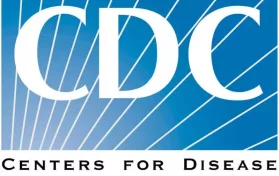
OSHA is an acronym for the Occupation Safety and Health Administration, and this agency is under the purview of the United States Department of Labor. OSHA’s administrator is the Assistant Secretary of Labor for Occupational Safety and Health, and currently, that position is held by Douglas L. Parker.
OSHA answers to the Secretary of Labor, a position in the president’s cabinet. The national office of OSHA is housed in the Frances Perkins Building in Washington, D.C.
OSHA was created with the enactment of the Occupational Safety and Health Act of 1970. The agency was created to make sure that workers enjoyed safe and healthy working conditions. OSHA is tasked with not only defining what a healthy and safe working environment is, but also with setting up training opportunities for businesses. OSHA also provides educational opportunities and they offer assistance to employees regarding workplace conditions.
When OSHA was established in 1970, members of Congress who had supported the legislation that created the agency pointed out that between 1955 and 1970, there had been over 400,000 Americans who had died in on-the-job accidents. At least 50 million had been severely injured in an on-site work accident. These legislators pointed out that these on-the-job accidents had cost billions in both lost production and lost wages during that time period.
President Nixon signed the Occupational Safety and Health Act into law that same year. Within one year, the agency that we now recognize as OSHA was established.
In looking at how well OSHA has worked between its creation in 1970 and in 2017, the numbers tell a definitive story. In 1970, there were approximately 14,000 accidents that resulted in a fatality in the workplace. By 2017, there were only about 5,000. So, one can see that the strict regulations and safety practices that OSHA established have placed a highly effective curb on workplace accidents.
Another interesting statistic considers that the workforce has grown, which means that OSHA is highly effective in promoting safety in the workplace. In 1972, just two years after OSHA was established, there were approximately 10.9 workplace incidents per every one hundred workers. By 2017, the number of incidents had been slashed to about 2.8 incidents per one hundred workers. When adding to these statistics that the workforce within that fifty year period had at least doubled, one can understand that OSHA has helped to reduce the amount of safety incidents on job sites by nearly eighty percent.
Does OSHA cover employees in all sectors?
Yes and no. OSHA applies to employees in all fifty states and all U.S. Territories, including the U.S. Virgin Islands, Puerto Rico, Guam, and American Samoa. OSHA is also applicable to employees in the District of Columbia as well as to the Outer Continental Shelf Lands. NOTE: The Outer Continental Shelf Lands includes areas that are outside what is considered the jurisdiction of the states and 200 nautical miles offshore of the continental U.S. That means that even oil rigs or other offshore worksites are covered under OSHA.
Now, here is where OSHA may or may not cover an employee. According to OSHA’s guidelines, most private sector jobs are covered under OSHA regulations. However, businesses that might be subject to other types of federal safety regulations, including nuclear power plants or mining companies, are not covered by OSHA guidelines. Family farms where only family members are employed on the premises do not fall under OSHA regulations, nor are businesses that are not involved in interstate commerce. Domestic service employers are not subject to OSHA regulations, either.
However, all federal agencies and their employees are subject to OSHA guidelines.
There are twenty-six states and two U.S. territories who have created their own safety regulations to follow; however, one should note that these regulations are OSHA-approved. These rules are specifically geared to public employees, which can include firefighters, law enforcement officials, and those who work in any type of government job (including both state and local government jobs).
It is important to remember that employers are subject to one particular portion of the OSH Act of 1970 – the General Duty Clause. This particular portion of the legislation makes employers responsible for protecting employees from “all serious recognized hazards,” and OSHA can respond to what they describe as “previously unknown dangers.” So, overall, it is all employers’ responsibility to ensure workplace safety no matter the type of business or nature of the work.
What are some of the typical workplace accidents that OSHA protects employees from experiencing?
Two of the most recognizable workplace accidents involve operating dangerous machinery as well as exposure to harmful chemicals, and OSHA has specific rules for both of these issues in the workplace. However, OSHA has also established rules concerning falls at work and working in an enclosed or confined space. In addition, OSHA does have some regulations regarding the workplace and communicable diseases.
Those who work in offices see governing from OSHA in regards to the level of sanitation in said spaces, and OSHA regulates plans for emergency evacuations at “office” jobs, including evacuations during a fire. Speaking of fires in the workplace, OSHA is the entity that regulates rules regarding fire extinguisher systems in the workplace.
What are some rights that employees have under the OSH Act of 1970?
The establishment of the Occupational Safety and Health Administration meant that workers had a certain “bill of rights” in the workplace. These rights cover everything from one’s right to work in a safe place to how complaints are filed to being informed of any OSHA violations that happen at one’s place of work.
OSHA offers employees the right to file a complaint against one’s workplace for violations of safety regulations, and the agency provides protections if one is fired due to filing a complaint. If an employee is said to be a “whistleblower,” then OSHA protects that employee as well. Employers cannot fire an individual, lay off said worker, demote, or blacklist an employee for alerting OSHA to worker safety violations under OSHA rules.
Employees can also refuse to work in certain unsafe situations. However, there are specific guidelines for this portion of OSHA regulations. First, the OSHA rules state that “any reasonable person” would recognize potential danger in carrying out a workplace task. Employees must be able to show that the danger in this task is “imminent,” and that employees could be hurt on the job prior to an OSHA inspector’s showing up to inspect the job site. Employees are expected to bring the potential danger to the employer and offer said employer the chance to eliminate the threat. Only then – if the employer does not (or will not) make corrections to the potential threat – employees may refuse the work without fear of retribution from the employer.
It is important to understand, however, the OSHA regulations only allow for an employee to refuse to put him or herself in “harm’s way,” but employees may not walk off the job in protest nor may they refuse to do any work at all.
Are there any type of businesses that are never regulated by OSHA?
Yes, and one of the most popular work sectors today – gig work – is not under OSHA regulations. This line of work includes Uber or Lyft drivers (or other rideshare programs) and any type of employment considered self-employment.
What do employers have to do for their employees under OSHA regulations?
Overall, employers must provide a safe workplace for all employees. If an employer discovers a potential hazard, then it is up to the employer to make corrections to a situation that would possibly cause harm to employees.
These potential hazards can fall into a number of different categories. Employers may have to install a better ventilation system in the workplace, or they may have to use safer chemicals in certain lines of work.
Now, let’s consider situations where employees may be utilizing a chemical to clean a space that isn’t well-ventilated. If the employer isn’t able to change the type of chemical used or revamp the ventilation system, then he may simply provide PPE (yes, personal protective equipment) in order to promote the safety of employees. This could include safety goggles or masks with air filters included.
Even ear plugs are considered safety or PPE equipment. That’s correct – OSHA even covers high amounts of noise at the workplace!
Employers are also tasked with providing training of safety procedures, and OSHA demands that this training is provided in a way that all employees can understand (in their native language, if necessary). Employers are responsible for testing the air quality of the workplace, and they must inform all workers of the potential of a chemical hazard. Employers MUST notify OSHA if there is an accident or a fatality on the workplace grounds; they must do this within eight hours of any fatality. They have twenty-four hours to notify OSHA if an incident that resulted in an employee’s being hospitalized takes place; this includes amputations or the loss of an eye as well.
Those flyers you’ve seen at the workplace that mention how many days between incidents? Those are mandated by OSHA, and the agency requires employers to post data regarding any worker injury or illness so that other employees are informed of the incident.
While many employers and so employees bemoan the strict regulations set forth by OSHA, the agency has dramatically decreased the amount of workplace accidents during the nearly-fifty year period in which the organization has been in effect. OSHA has successfully cut the amount of American workers hurt on the job, and the agency promotes worker safety as well as workers’ job security if a worker reports safety hazards.





